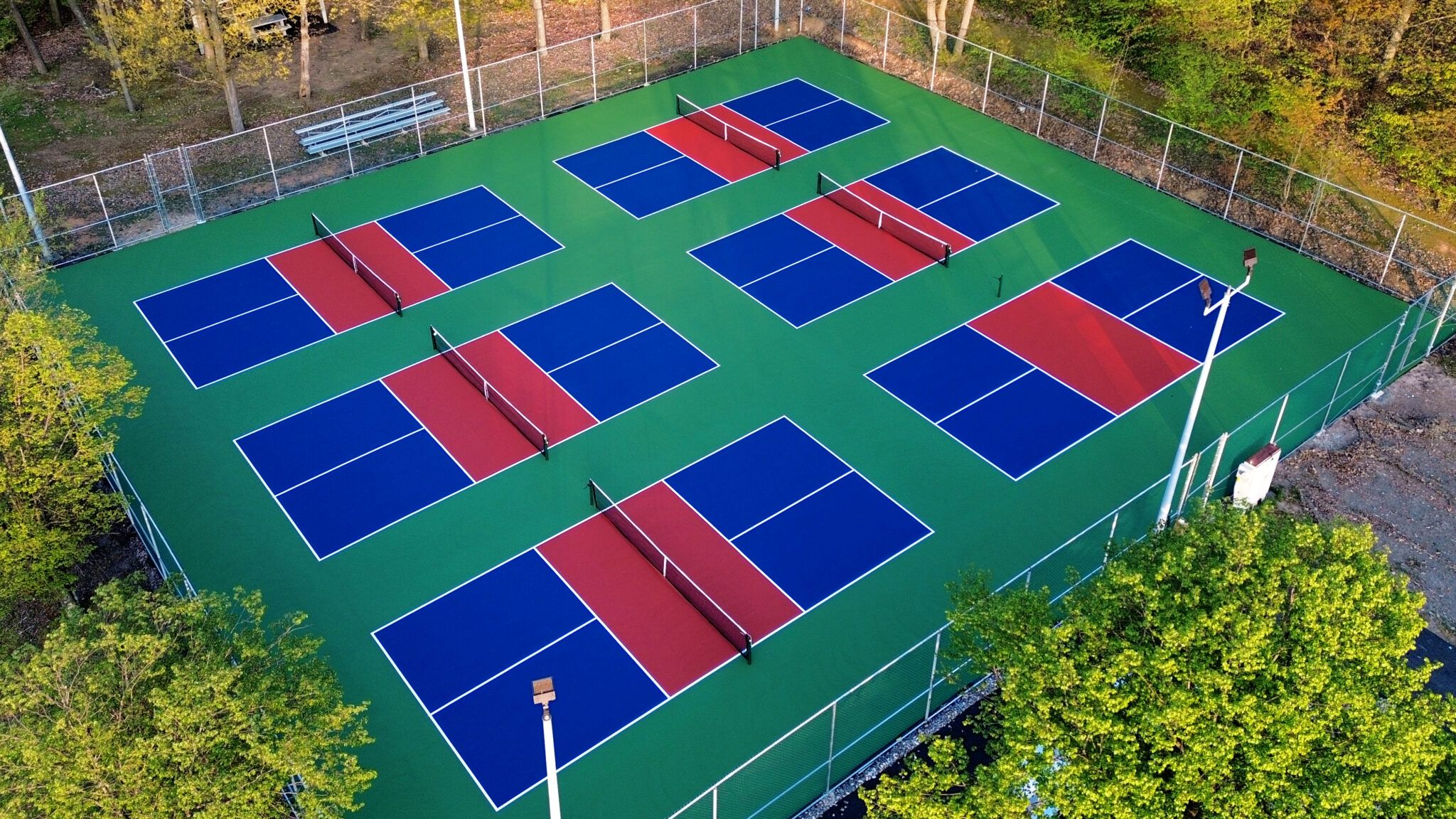Budget-friendly Pickleball Court Construction for Homes and Communities
Budget-friendly Pickleball Court Construction for Homes and Communities
Blog Article
Sustainable Practices in Pickleball Court Building You Must Know
As the appeal of pickleball proceeds to rise, so too does the demand for sustainable methods in court building. This approach not just addresses ecological issues yet additionally boosts the long life and capability of the courts. From selecting eco-friendly materials to carrying out effective drain and energy-saving illumination options, there are numerous techniques to think about. The influence of these practices expands far beyond the court itself. Recognizing exactly how each component adds to a more lasting future invites further expedition into the elaborate equilibrium in between entertainment growth and ecological stewardship.
Picking Eco-Friendly Products
Picking environmentally friendly materials is a crucial action in the building of lasting pickleball courts. The selection of lasting products not just lessens environmental influence yet also boosts the durability and efficiency of the court. Key materials include recycled rubber for the surface area, which offers outstanding durability and shock absorption while diverting waste from land fills.
In addition, making use of in your area sourced materials decreases transportation emissions and supports regional economic situations. Pickleball court construction. Utilizing native woods for secure fencing and seating can offer a lasting aesthetic while ensuring strength versus the aspects.
Integrating permeable products for court structures can further add to sustainability by enabling all-natural water drainage and decreasing drainage. These choices not only protect local environments however also advertise much healthier play atmospheres.
Efficient Drain Solutions
While the choice of environment-friendly products is essential, applying efficient drainage remedies is similarly crucial for maintaining sustainable pickleball courts. Proper drainage not just safeguards the court surface from water damages but also decreases disintegration and runoff, promoting ecological stability.
Effective drainage systems can consist of permeable paving, which permits water to infiltrate the ground instead than merging on the surface area. This decreases the chance of standing water, which can result in mold and other maintenance concerns. Additionally, incorporating purposefully positioned drainage networks and swales can guide excess water far from the court area, making sure a completely dry playing surface area and preventing dirt erosion.
Making use of indigenous vegetation in the landscaping around the courts can even more enhance drain by absorbing excess water and minimizing runoff. These plants call for less watering and advertise biodiversity, straightening with sustainable techniques.
Furthermore, it is crucial to consistently maintain the drainage system to ensure its lasting performance. This includes cleaning debris and surveillance for clogs. By prioritizing effective water drainage services, pickleball court constructors can considerably add to the sustainability and long life of the center, ultimately benefiting both players and the atmosphere.
Energy-Efficient Lights Options
As the need for pickleball continues to grow, integrating energy-efficient lights options right into court design has actually become progressively crucial for sustainability. Typical lights systems frequently consume excessive energy, contributing to higher functional expenses and environmental effect. As a result, embracing contemporary, energy-efficient innovations is necessary for both new building and constructions and improvements.
LED (Light Emitting Diode) illumination sticks out as a premier choice due to its longevity and energy savings (Pickleball court construction). Contrasted to conventional lights, LEDs utilize roughly 75% much less energy and can last approximately 25 times longer, dramatically minimizing maintenance expenses. Additionally, the directional nature of LED lights lessens light pollution, making certain that illumination is concentrated on the court instead than surrounding areas.

Lasting Surface Alternatives
Exploring sustainable surface area choices for pickleball courts has actually gained traction among gamers and builders alike. The focus on eco-friendly materials not only aligns with the expanding ecological recognition yet additionally enhances the efficiency and longevity of the courts.
This material gives exceptional shock absorption, reducing the threat of injuries for players while advertising sustainability. These ceramic tiles are easy to mount and replace, and their flexibility permits for different court arrangements.
All-natural grass courts are also becoming a sustainable selection, advertising biodiversity and reducing the heat island effect. They require normal upkeep and water, which might not line up with all sustainability goals.

Water Conservation Techniques

An additional effective method entails the setup of rain harvesting systems. These systems save and gather rainwater for use in maintaining court surface areas and landscape design. This technique not just saves potable water yet also minimizes reliance on local resources.
Additionally, using drought-resistant landscaping around the courts is necessary. Native plants need much less water and are much better adapted to neighborhood environment conditions, thus decreasing general water consumption. In addition, utilizing efficient watering systems, such as drip watering, ensures that water is delivered directly to plant roots, decreasing dissipation and waste.
Conclusion
Integrating lasting methods in pickleball court building and construction substantially adds to environmental preservation and resource efficiency. Utilizing environment-friendly materials, executing effective drainage solutions, and adopting energy-efficient lights alternatives can considerably find more information minimize eco-friendly impact. Furthermore, discovering sustainable surface area options and utilizing water conservation techniques boost the overall sustainability of these recreational centers - Pickleball court construction. By prioritizing these practices, the building and construction of pickleball courts can align with more comprehensive environmental goals while advertising longevity and performance within communities.
As the appeal Recommended Site of pickleball proceeds to climb, so also does the requirement for lasting practices in court building.Choosing green materials is an important step in the construction of lasting pickleball courts. By focusing on energy-efficient lights choices, pickleball court constructors can contribute to a more sustainable future while fulfilling the needs of stakeholders and gamers alike.Integrating sustainable surface area choices not just enhances the performance of pickleball courts but likewise paves the way for implementing effective water conservation techniques.Including lasting techniques in pickleball court building significantly adds to ecological preservation and source effectiveness.
Report this page